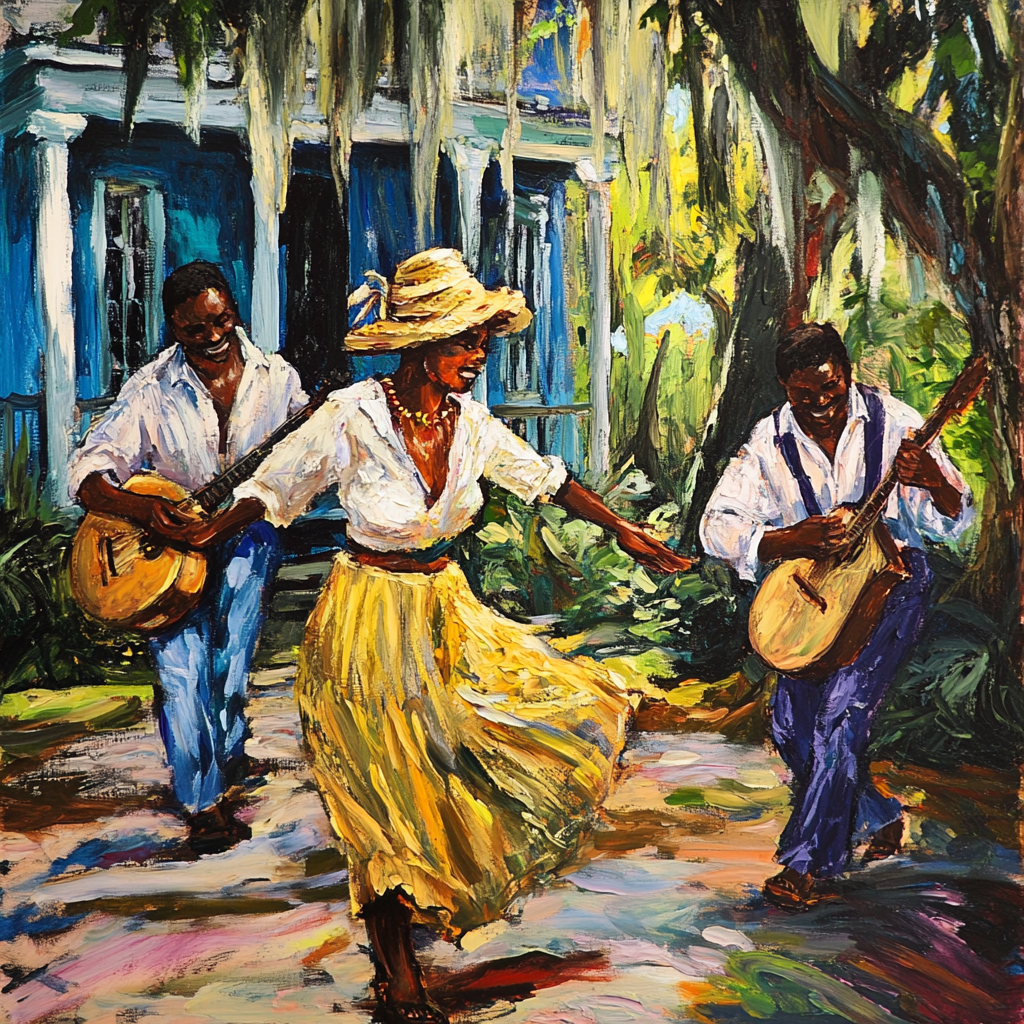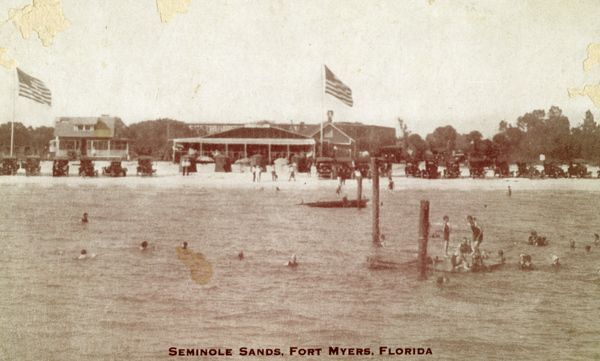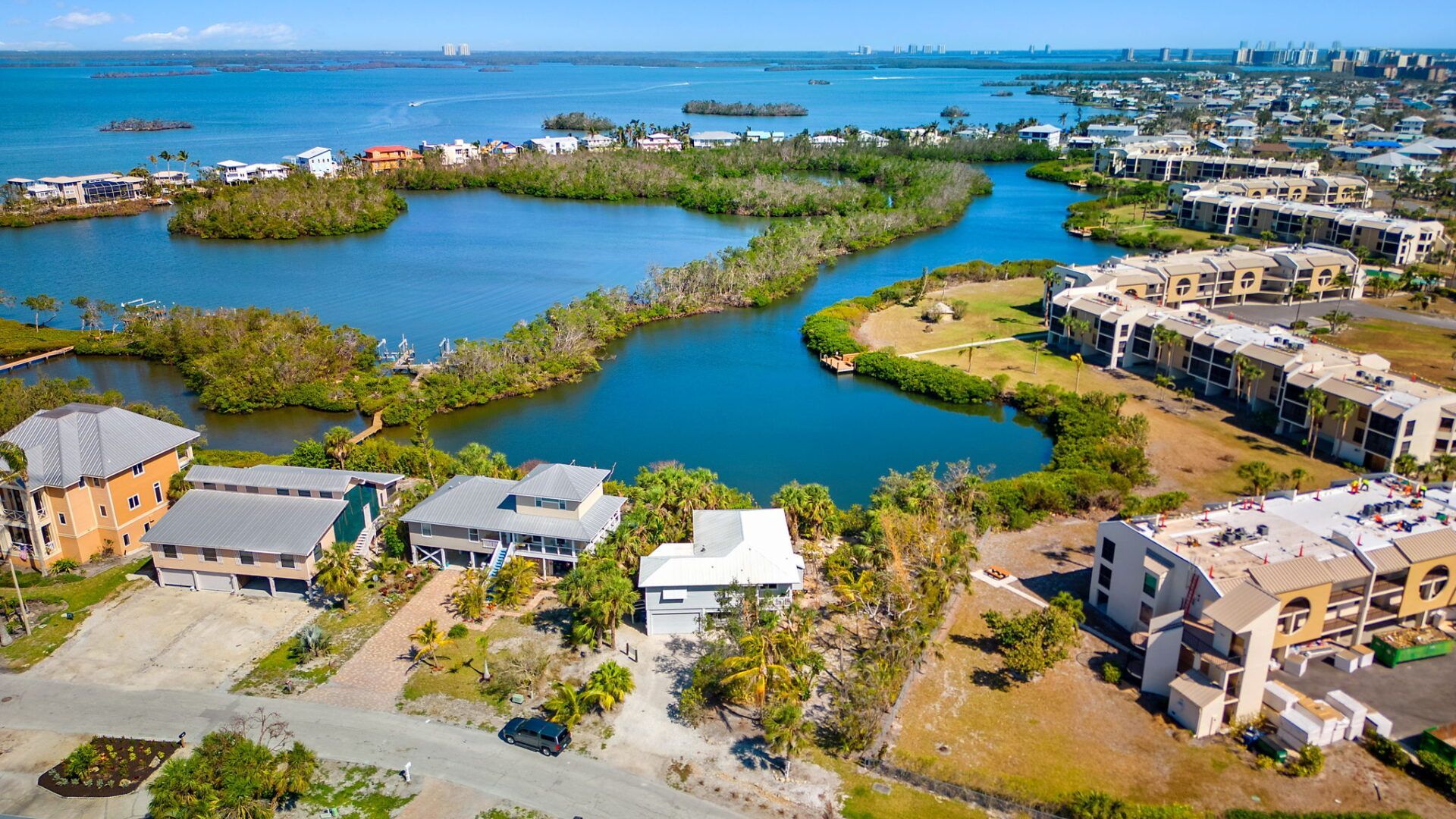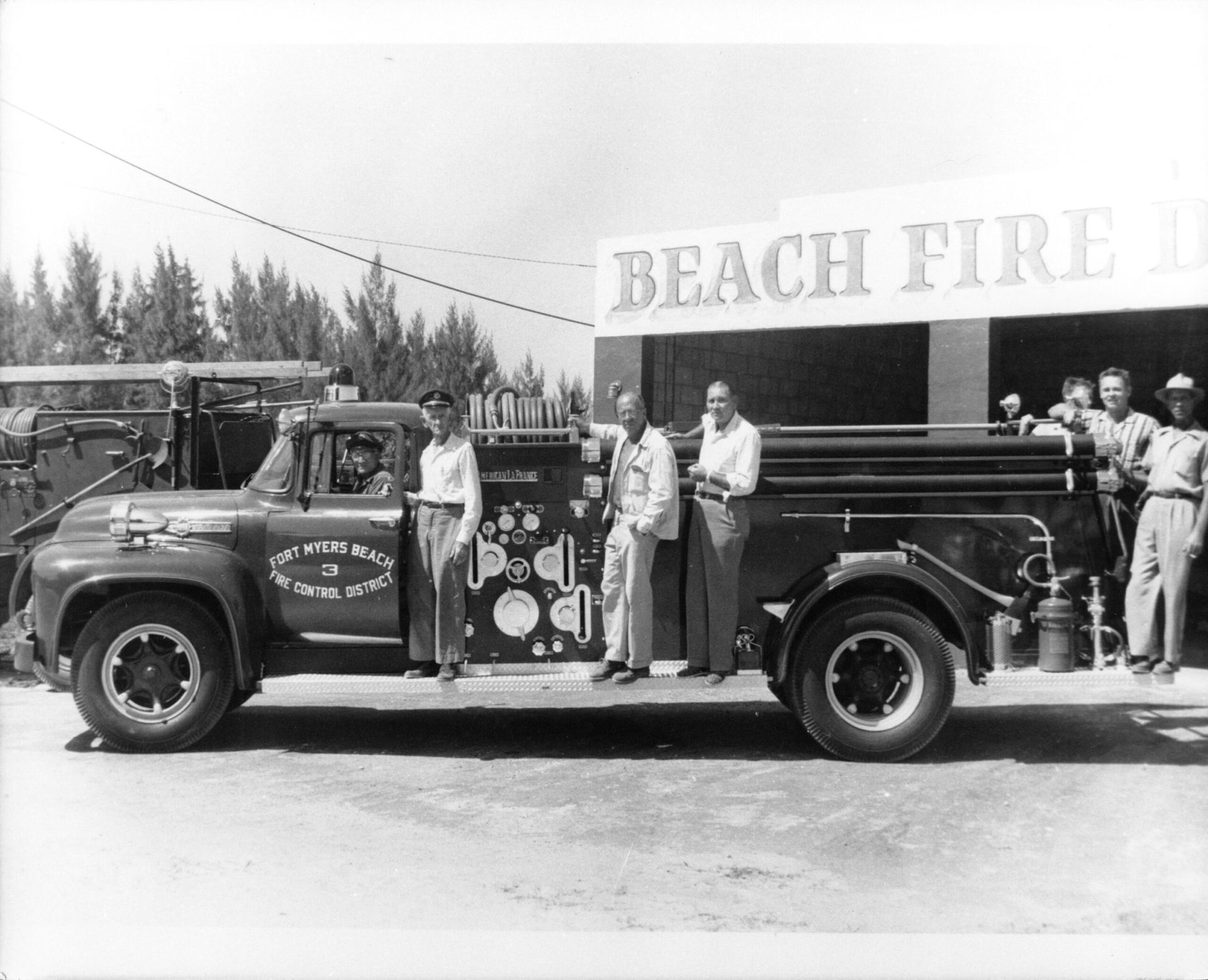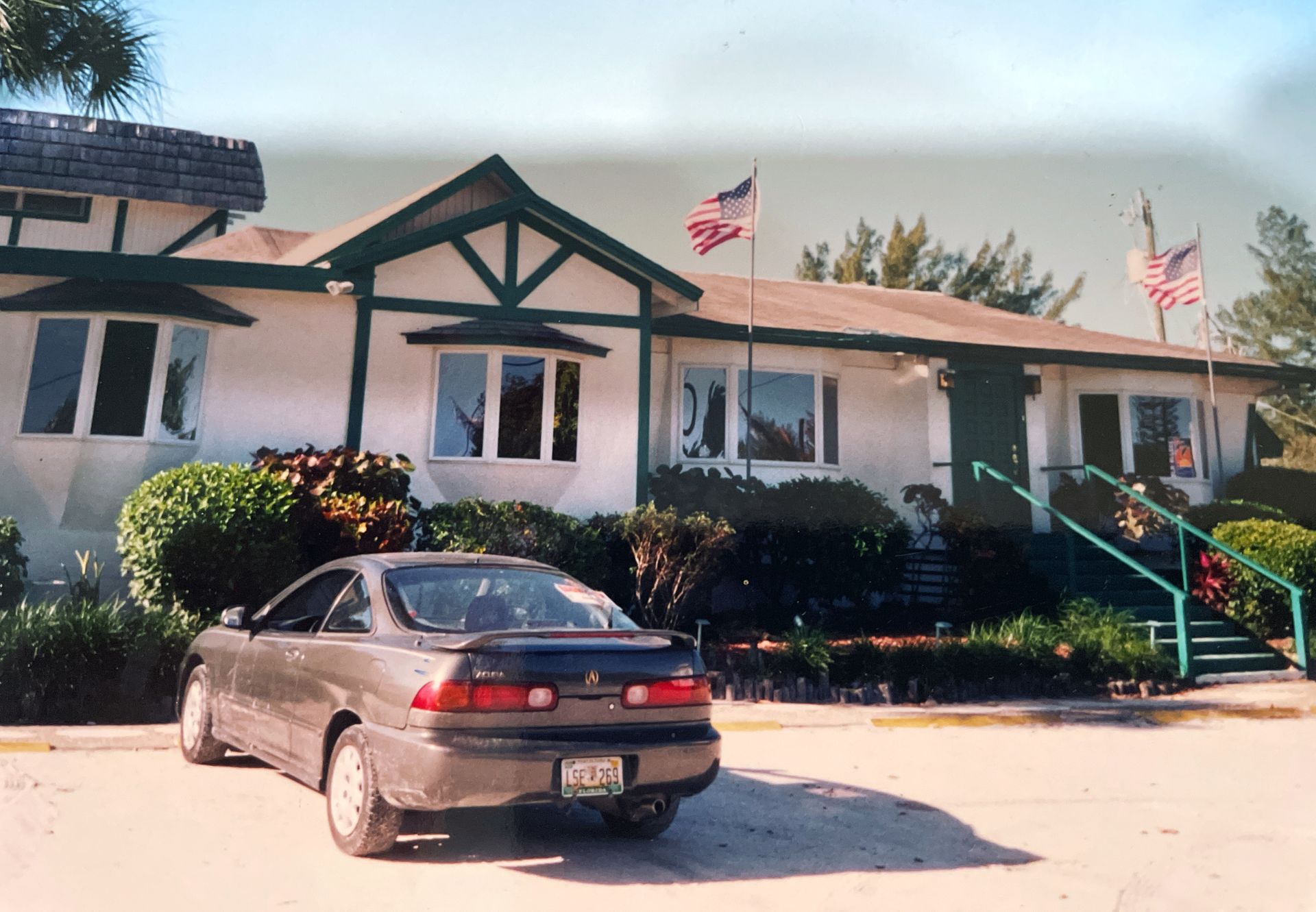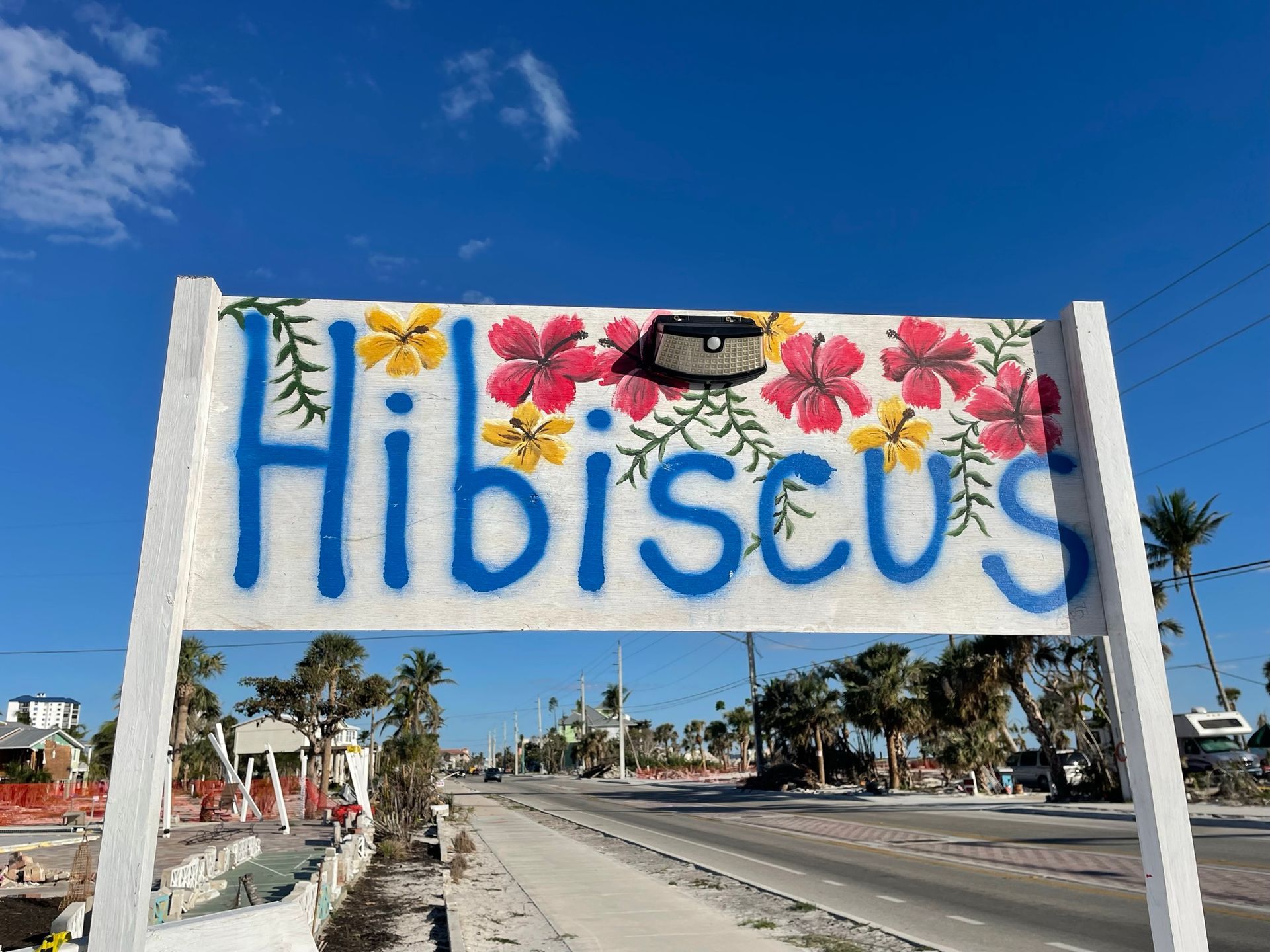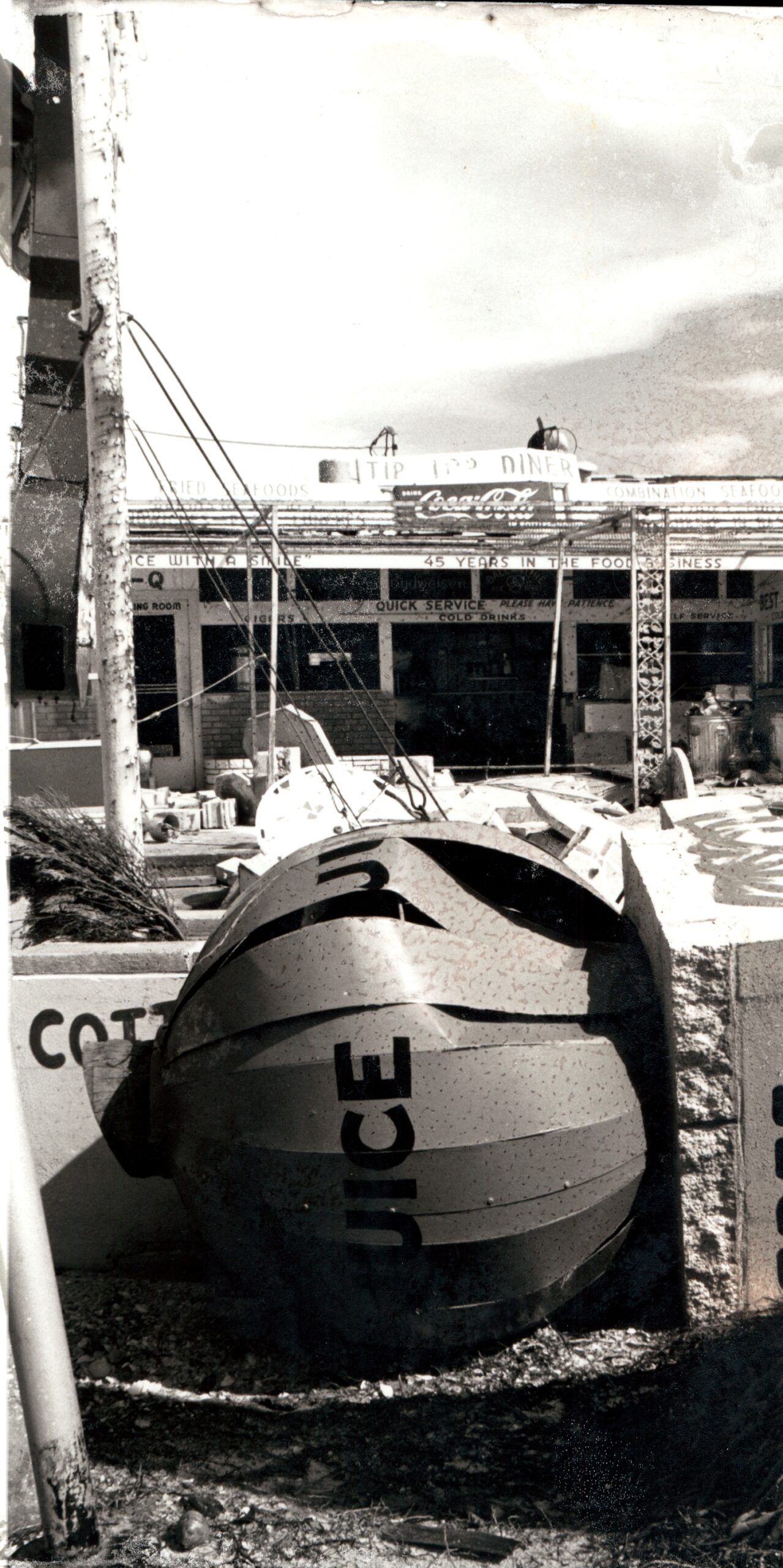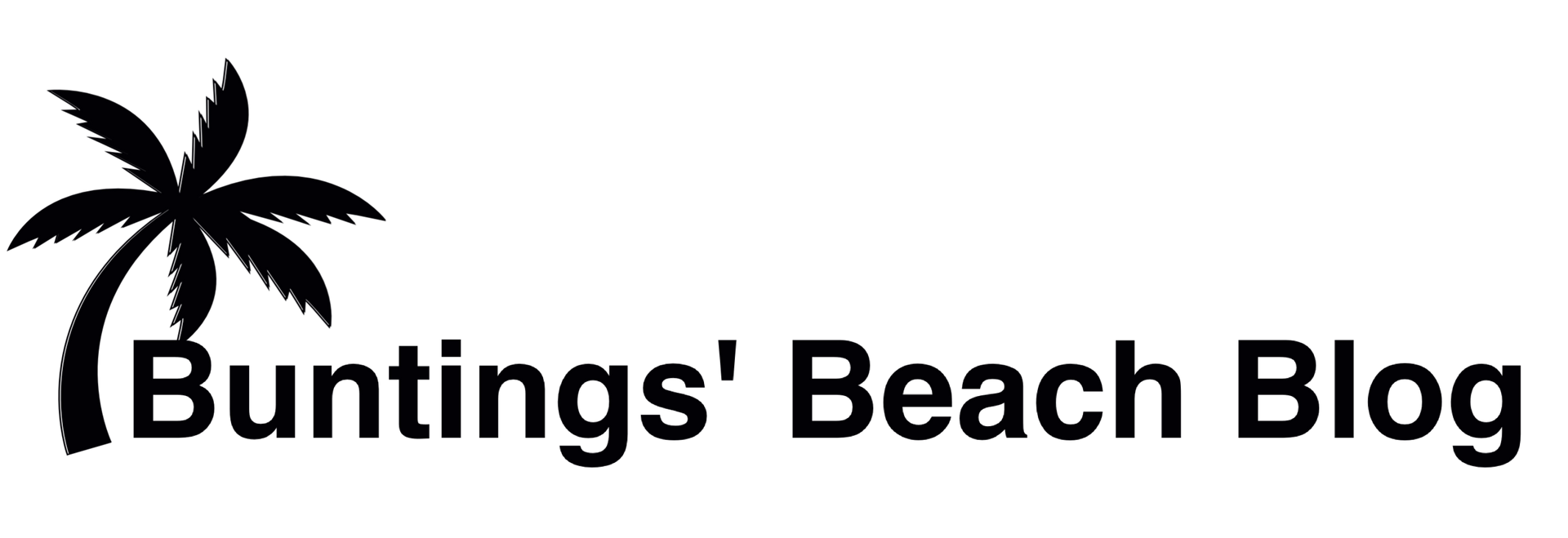Tubing Down the River
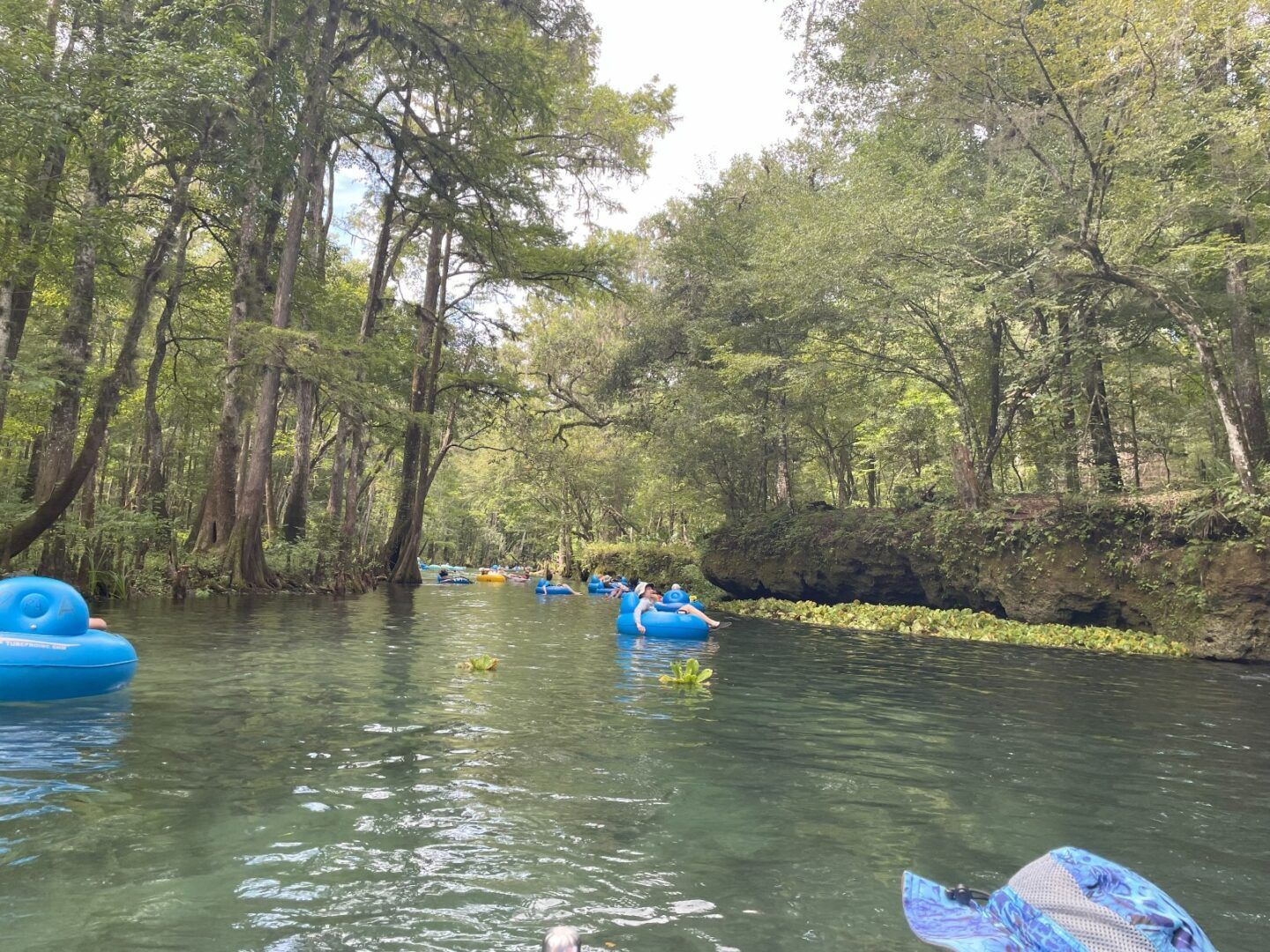
Ichetucknee Springs
Most people who visit Florida tend to flock to the coast where they can enjoy the beaches and swim in either the Gulf of Mexico or the Atlantic Ocean. However, in the middle of the summer, neither the gulf nor the ocean will provide much relief from the heat. The best places to cool off on those hot summer days are the springs.
Florida is the home to many beautiful natural springs where the water is always a cool 72 degrees. A couple of weeks ago, we visited Crystal River, and I wrote about Kings Bay and the different springs we visited in that area. This weekend, we traveled a little farther north to a small town called Fort White where eight major springs meet to form the Ichetucknee River, one of the best springs in the state.
Brief History
Let’s begin with a brief history lesson. Nearly 14,000 years ago, Florida’s climate was much cooler and drier than it is today. There were not many water sources at that time. The springs began as limestone basins and were nothing more than non-flowing pools where animals came to drink. The early Indians came to the water holes to hunt and drink the water.
The water table rose as the climate warmed. Eventually, the spring pools overflowed their banks covering the land. This was the birth of the spring runs and rivers. The natives used these new water routes for transportation. Archaeologists have discovered many artifacts on the banks of the Ichetucknee River leading them to hypothesize that this was an important canoe port at one time.
In the 1500s, the Timucua Indians built a village along the river, and in the 1600s, the Franciscan missionaries established missions in the same area. In the mid-1700s, the Creek Indians came to Florida from Georgia and Alabama. One village was established near the mouth of the Ichetucknee. They named the river Ichetucknee which meant “place of the beavers.”
In the 1800s travelers on the historic Bellamy Road, would stop by Ichetucknee Springs to rest and drink the water. Later, a gristmill and general store popped up at Mill Pond Spring. In the late 1890s and early 1900s, this area became ground zero for the Florida Phosphate industry. Later, sawmills and turpentine operations replaced phosphate mining and from the turn of the century to the 1940s, cypress and pine forests were harvested for lumber.
For many decades, the springs of the Ichetucknee have been a favorite place for locals to gather for picnics, family reunions, and even baptisms. In the 1950s and 60s, the Loncala Phosphate Company owned the land surrounding the springs. At this time, people discovered tubing, and college students from UF would spend weekends partying and floating down the river on tubes.
Loncala allowed the students and other visitors to use the river for recreation, but the popularity of the river soon overwhelmed the natural resources. In 1970, Loncala sold the property to the state to be turned into a state park where the fragile ecosystem could be protected. The state cleaned up the river and in 1972, the river and springs were declared a National Natural Landmark.
Our Visit
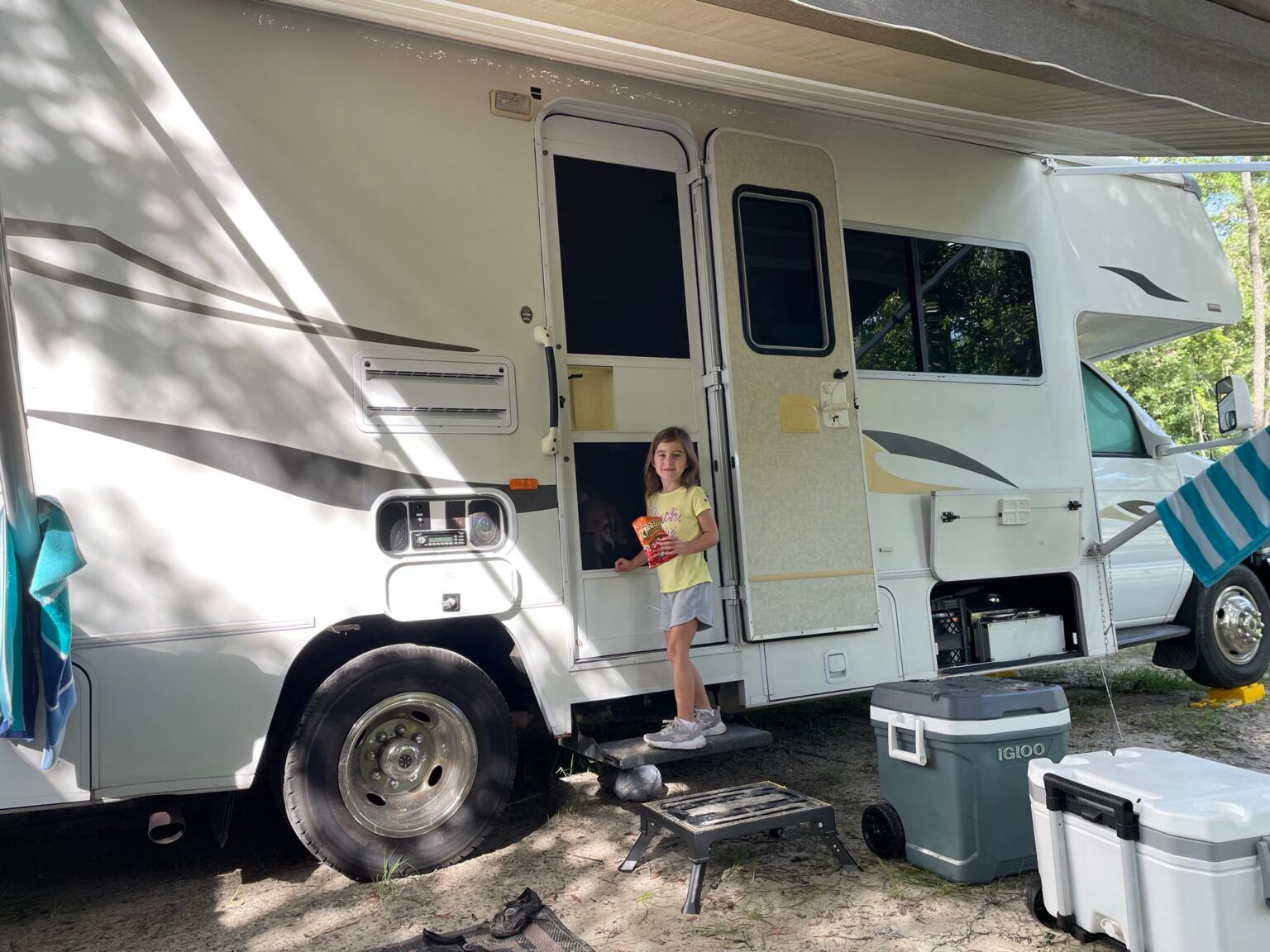
Moonshine Acres was a great place to set up camp.
We decided to make this our last summer excursion (not counting Labor Day in the Keys) with the family. None of us had ever been here before, and we really had no idea what to expect. We read all the blogs and reviews but were still unprepared for what awaited us when we arrived.
It was about a five-hour trip in the motor home, making a few stops for food and supplies. We arrived at our campground about two miles from the entrance to the spring. The state park does not have camping, so we had to find a private campground close by. Moonshine Acres fit the bill nicely, and we set up camp and began to plan our adventure.
The information we were reading about what was and was not allowed on the river was a bit confusing. We have all kinds of floatation devices (paddleboards, kayaks, rafts, inflatable boats, etc) but we left them home because most of the reviews mentioned renting tubes from the general store at the park. This seemed like the best way to go.
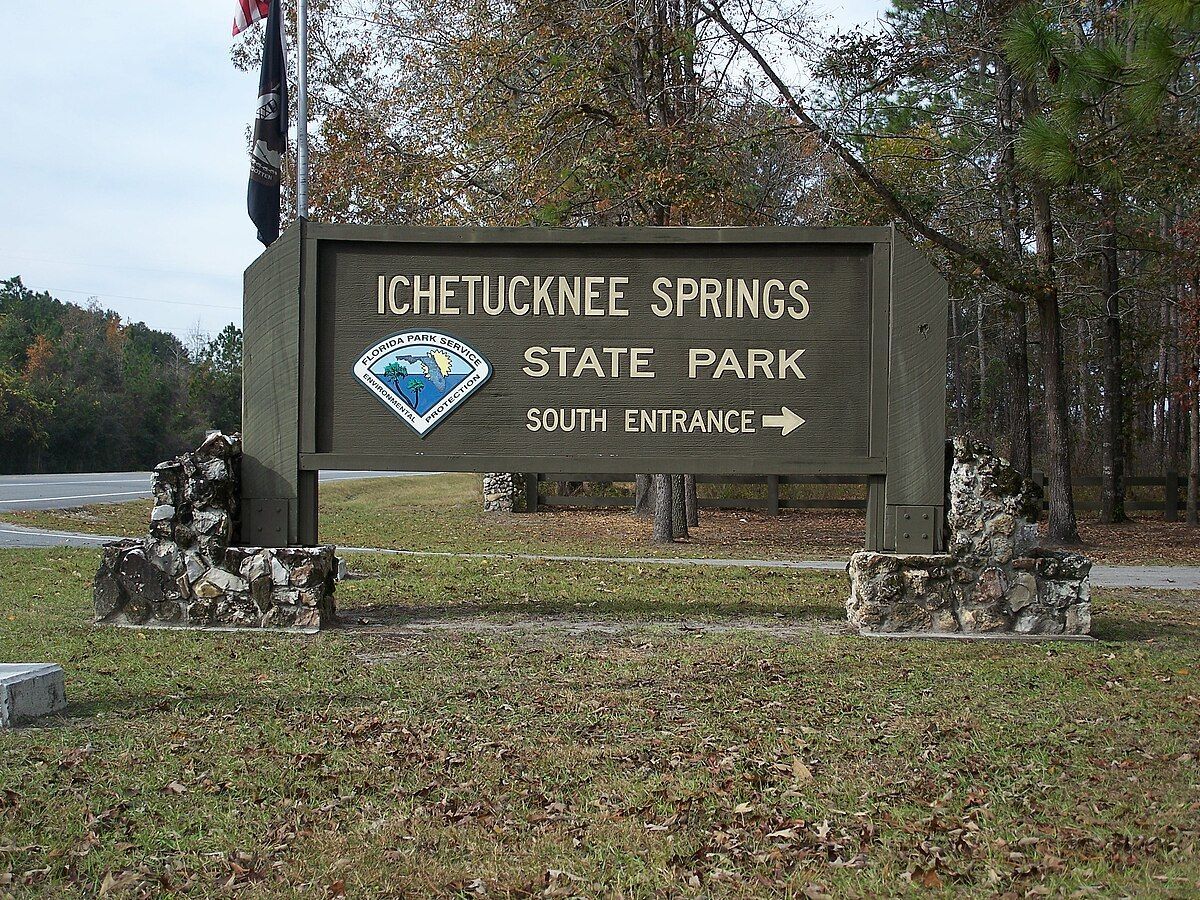
Creative Commons Attribution-Share Alike 2.5 Generic
We got to the park at 10:00 and found a long line of cars waiting to get in. We paid $6.00 per person and entered the park. When we pulled into the first parking lot, we were shocked at the number of cars and lines of people everywhere. The line to buy tickets for the tram (to take us back to the parking lot after tubing down the river) and rent the tubes was at least 100 people deep.
After finally finding a parking spot, we stood in line to purchase the tram tickets and rent the tubes. This took about 30 minutes. We then made our way over to the tube line which was even longer than the ticket line. It took about an hour before we got the tubes and headed to the spring.
Two different starting points are available year-round for tubing down the river. One is Midpoint and the other is Dampier’s Landing. The line for the tram to take us to Midpoint was very long and was not moving very quickly. Dampier’s Landing was a short walk down to the river. Having already spent nearly two hours in lines, we opted to launch at Dampier’s Landing.
The float from Dampier’s Landing to the takeout point would take about an hour. If we had opted to launch from Midpoint, we would have added an hour to the float, but we could have gotten off at Dampier’s landing.
The Float Begins
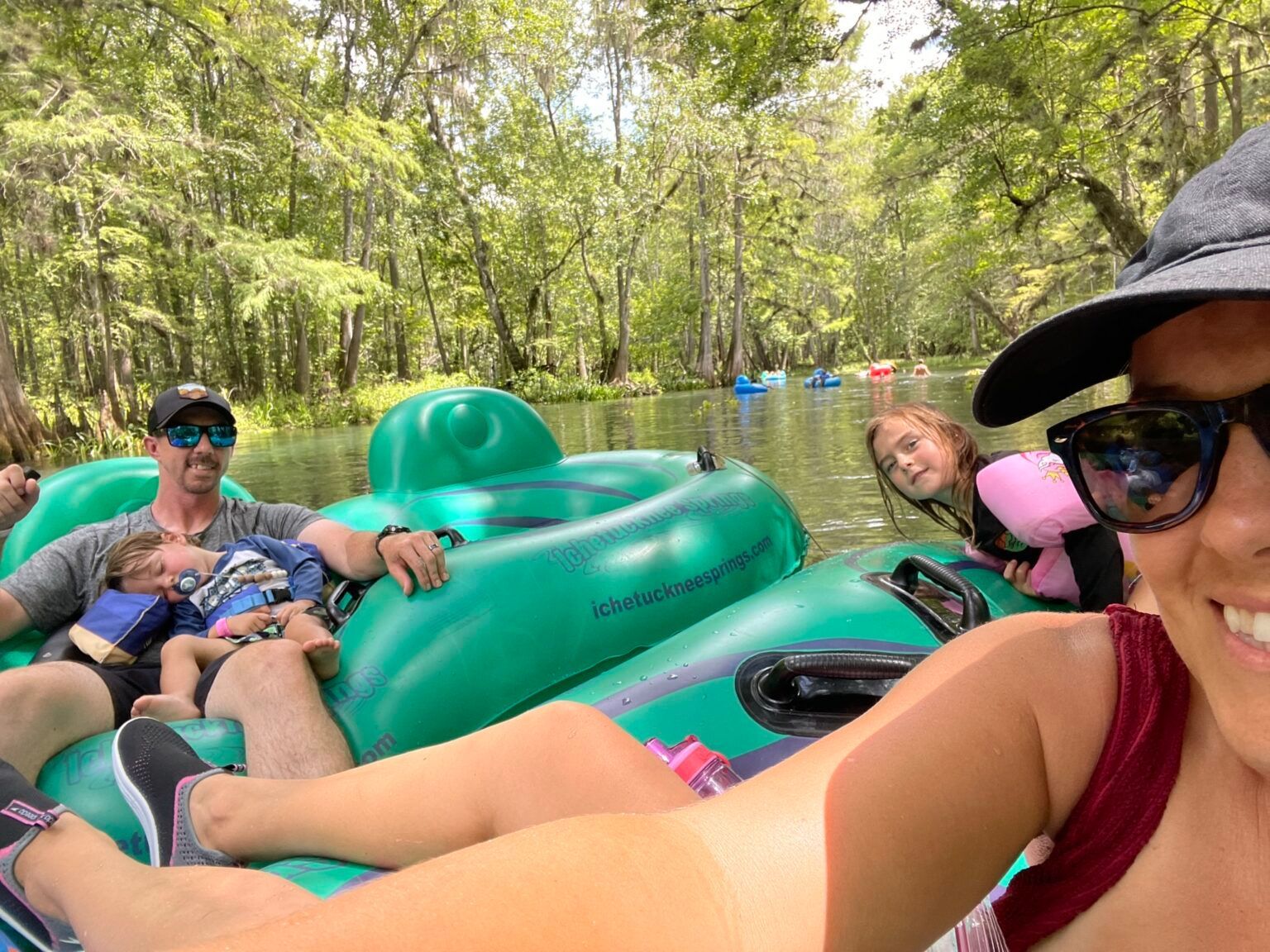
Relaxing on the river
We got on the tubes without any trouble and began our journey. My daughter, Angie, and her husband, Nic, had double tubes so each could have a child. My husband, Bob, and I opted for single tubes. We were able to tie the tubes together even though we forgot the bungee cords in the car.
The trip down river was worth the wait. The current was just enough to keep us moving, but not strong enough to lose control. The river was packed with people in tubes, on paddle boards, in kayaks, and inflatable boats. We grabbed two paddles when we rented the tubes, and they really came in handy to keep us from running into trees and other objects along the riverbank.
Despite the crowds, the people were extremely polite and friendly. At one point, a fellow tuber hit a tree and tipped over. Although he was wearing a life jacket, he could not swim and was beginning to panic as the life vest was not properly fitted and his head was going under the water. Angie and another tuber jumped into the river and helped him to the bank where he was able to calm down and get back onto the raft.
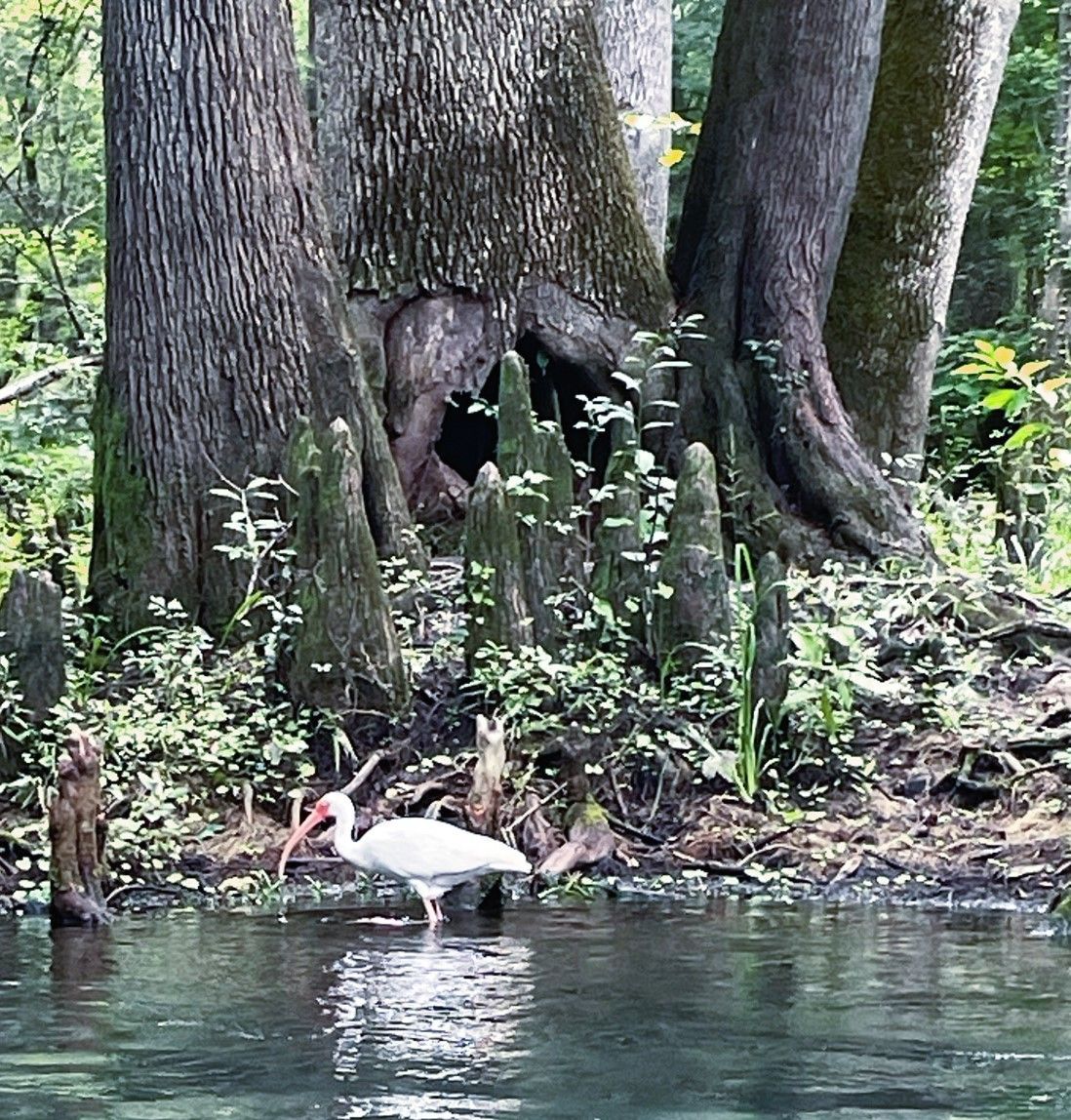
Wading birds were just one of the many creatures we saw on our trip down the river.
Another time, our rafts were caught in some branches and another person who was swimming down the river helped pull us back into the middle where we caught the current again. We floated for about an hour and a half before we reached the takeout point. The ride was worth all the waiting and planning. The water was refreshing, and the scenery was beautiful with Cypress trees, wading birds, and the endangered Ichetucknee siltsnail. We got to the takeout point and disembarked from the tubes with no trouble. The line for the tram back to the parking lot, however, was very long and was not moving at all.
When we learned we could leave the tubes at the landing and walk the 9/10 of a mile back to the parking lot, we jumped on it. The walk was along a path next to the road, and it took us about twenty minutes to get back to our car.
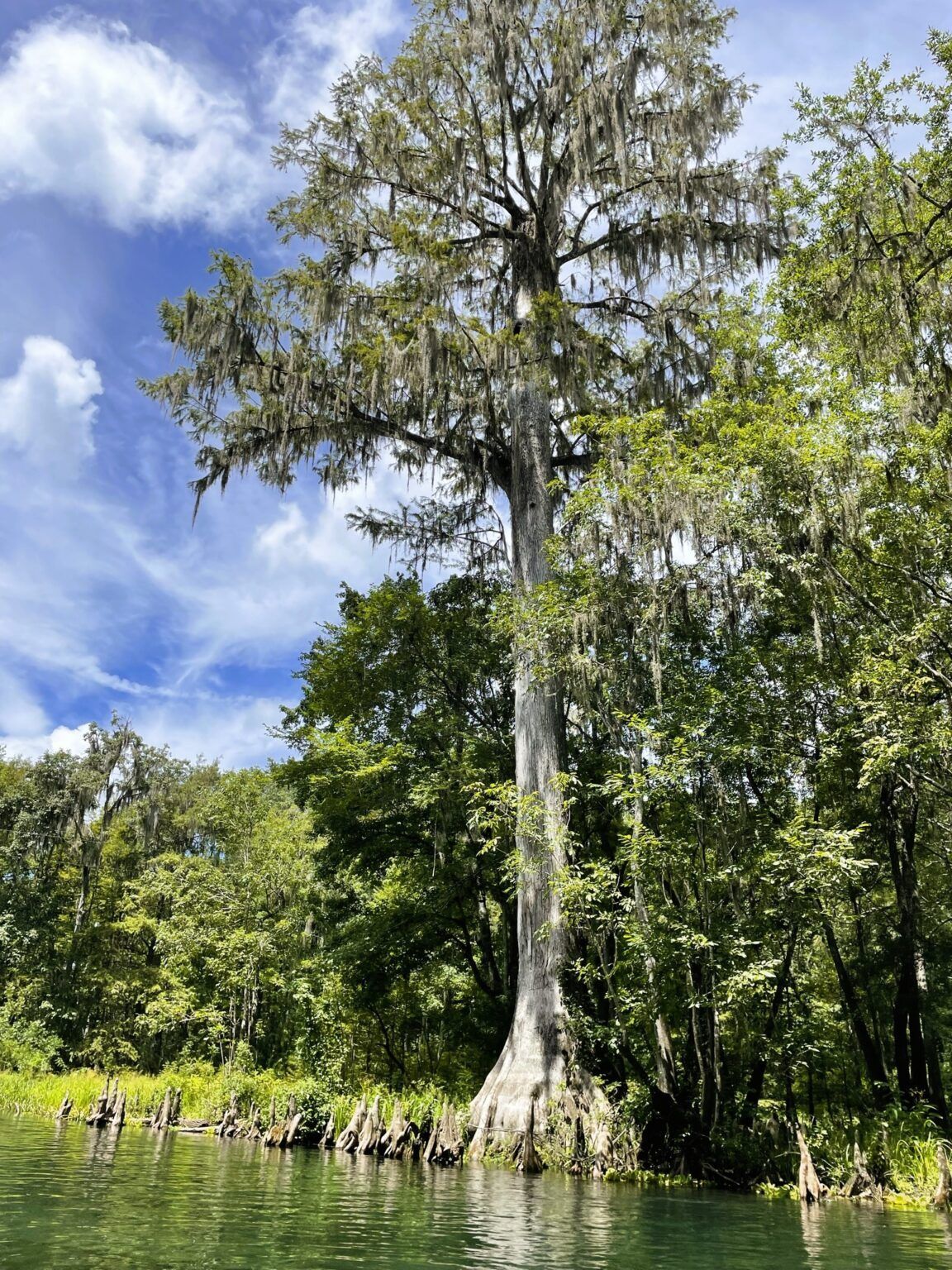
Cypress Trees lined the riverbank
Lessons Learned
If we had brought our own tubes, we could have saved time and money. It cost $100 to rent four tubes and pay for the tram ride back to the park from the end of the spring. Only 3,000 tubes a day are allowed to use the midpoint launch. You can access the launch by walking .65 miles from the south parking lot (which we did not know). The run lasts around 45 minutes to an hour and you end up at Dampier’s Landing where you can get off or continue tubing for another hour.
We really did not know how far the Midpoint Launch was from the park, so we decided to launch from Dampier’s Landing. I think next time we might try walking the .65 miles to the midpoint launch and end up at Dampier’s Landing. Then, if we wanted a longer ride, we could continue to the end. When we left the park around 1:00, it was closed because of the large number of visitors. There was a line of cars parked along the road outside of the park waiting to get in.
After speaking with the locals back at the campground, we learned that this was the busiest weekend of the year because school starts next week. Next time, we will visit after school starts and on a weekday.
Tips For Your Trip
- Bring water shoes because the bottom of the river is filled with sharp rocks and other debris.
- No plastic bottles are allowed on the river so bring water in an environmentally friendly bottle.
- Anyone who is not a good swimmer should wear a life jacket and make sure it is secured correctly.
- Use ropes or bungee cords to link your tubes together.
- Bring a paddle of some kind to help steer the tubes.
- Consider walking to the Midpoint Launch (.65 of a mile) carrying your tube or take the tram if the wait is not too long.
- Launch at Midpoint and float to Dampier’s Landing.
- Take a break at Dampier’s Landing and have a picnic or an ice cream cone at the general store.
- Then, if you feel energetic, put the tubes back in and float down the river for another hour or so.
- You can take the tram back if it is not crowded or you can walk the 9/10 of a mile back to the parking lot.
